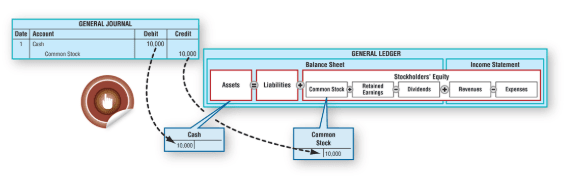
In addition to the business income limit for your section 179 deduction, you may have a taxable income limit for some other deduction. You may have to figure the limit for this other deduction taking into account the section 179 deduction. This chapter explains what property does and does not qualify for the section 179 deduction, what limits apply to the deduction (including special rules for partnerships and corporations), and how to elect it. You can elect to deduct state and local general sales taxes instead of state and local income taxes as an itemized deduction on Schedule A (Form 1040). If you make that assets that can be depreciated choice, you cannot include those sales taxes as part of your cost basis. Instead of including these amounts in the adjusted basis of the property, you can deduct the costs in the tax year that they are paid.
TurboTax Online: Important Details about Filing Simple Form 1040 Returns
Mannequins are long-term tangible assets of a clothing boutique which is why they are depreciable in its accounting books. The concept of depreciation in accounting vastly differs from the concept of depreciation in economics. In accounting, we assume the value of cash to remain stable over time and ignore the effects of inflation on monetary assets. The expected value of depreciable assets towards the end of their useful lives is lower than their original cost to the business. It is determined by estimating the number of units that can be produced before the property is worn out.
- Another asset that cannot be depreciated in accounting is the business owner’s personal property, such as a private car or personal residence.
- Under this convention, you treat all property placed in service or disposed of during a tax year as placed in service or disposed of at the midpoint of the year.
- Because you placed your car in service on April 15 and used it only for business, you use the percentages in Table A-1 to figure your MACRS depreciation on the car.
- Improvement means an addition to or partial replacement of property that is a betterment to the property, restores the property, or adapts it to a new or different use.
- If you dispose of residential rental or nonresidential real property, figure your depreciation deduction for the year of the disposition by multiplying a full year of depreciation by a fraction.
- The cost of business assets can be expensed each year over the life of the asset to accurately reflect its use.
- Since it’s used to reduce the value of the asset, accumulated depreciation is a credit.
Terminating GAA Treatment

Land, inventory, accounts receivable and accounts payable, intangible assets, and investments are all excluded from depreciation. Understanding which assets cannot be depreciated is essential for businesses to ensure accurate financial reporting and compliance with accounting standards. By excluding these assets from depreciation, businesses can avoid errors in their financial statements and provide stakeholders with a true picture of their financial performance. Under MACRS, most assets do not use straight-line depreciation unless required, such as residential rental property (27.5-year life) and commercial buildings (39-year life). The IRS provides tables Accounting For Architects to determine the correct percentage to apply each year. While this method results in lower deductions early on compared to accelerated methods, it offers predictability in tax planning.
What Is Listed Property?
For example, if your organization owns its office building, that building will eventually require repairs. However, if your organization also owns the land where the building is located, that property is exempt from depreciation. Land values vary but typically appreciate based on outside factors that have nothing to do with your organization’s daily use. Keep in mind, however, that if you do make improvements to the land, you can still deduct that as a business expense.
- Machinery and equipment can depreciate because their useful life is longer than most other assets.
- Any additions or improvements made to your rental property should be treated as separate items for depreciation purposes.
- 2024 is the third tax year of the lease, so the applicable percentage from Table A-19 is −19.8%.
- If a business accidentally depreciates a non-depreciable asset, it should consider taking corrective action immediately.
- Almost all intangible assets are amortized over their useful life using the straight-line method.
- Jeremy writes for small business owners who need actionable information on tax strategy, efficient accounting practices, and plans for long-term growth.
Units of production method
In finance and accounting, depreciation is a cornerstone concept that is pivotal for accurately reflecting the value of assets over time. Let’s delve into what depreciation entails, its significance for financial reporting and tax obligations, and the various methods used to calculate it. Inventory is not depreciated in the same way that other business assets are. Instead, inventory is accounted for as a current asset and is expensed as cost of goods sold when it is sold.

The applicable convention (discussed earlier under Which Convention Applies) affects how you figure your depreciation deduction for the year you https://tagsag.jogaoktatok.hu/absorption-costing-explained-traditional-full/ place your property in service and for the year you dispose of it. It determines how much of the recovery period remains at the beginning of each year, so it also affects the depreciation rate for property you depreciate under the straight line method. Use the applicable convention, as explained in the following discussions. Businesses often lease equipment instead of purchasing it outright to manage cash flow and avoid large upfront costs.
Qualified business use of listed property is any use of the property in your trade or business. The business-use requirement generally does not apply to any listed property leased or held for leasing by anyone regularly engaged in the business of leasing listed property. Whether the use of listed property is for your employer’s convenience must be determined from all the facts. The use is for your employer’s convenience if it is for a substantial business reason of the employer. The use of listed property during your regular working hours to carry on your employer’s business is generally for the employer’s convenience. If these requirements are not met, you cannot deduct depreciation (including the section 179 deduction) or rent expenses for your use of the property as an employee.

Significance of Understanding Depreciable Assets:

You must generally file Form 3115 to request a change in your method of accounting for depreciation. If you deduct more depreciation than you should, you must reduce your basis by any amount deducted from which you received a tax benefit (the depreciation allowed). You make a $20,000 down payment on property and assume the seller’s mortgage of $120,000. Your total cost is $140,000, the cash you paid plus the mortgage you assumed. If you buy property and assume (or buy subject to) an existing mortgage or other debt on the property, your basis includes the amount you pay for the property plus the amount of the assumed debt. You must determine whether you are related to another person at the time you acquire the property.
Free Course: Understanding Financial Statements
Net Book Value is the original cost of the asset less the accumulated depreciation. Consider the estimated salvage or residual value of the asset during the end of its useful life. It’s the expected value of the asset once it has depreciated or fully utilized. Economic depreciation or use, on the other hand, occurs when there’s a decline in the economic value of an asset over time. Assets depreciate because of physical deterioration or economic use. Physical deterioration happens when the asset loses its original cost because of wear and tear, natural disasters, or accidents.
For purposes of the business income limit, figure the partnership’s taxable income by adding together the net income and losses from all trades or businesses actively conducted by the partnership during the year. See the Instructions for Form 1065 for information on how to figure partnership net income (or loss). However, figure taxable income without regard to credits, tax-exempt income, the section 179 deduction, and guaranteed payments under section 707(c) of the Internal Revenue Code.

